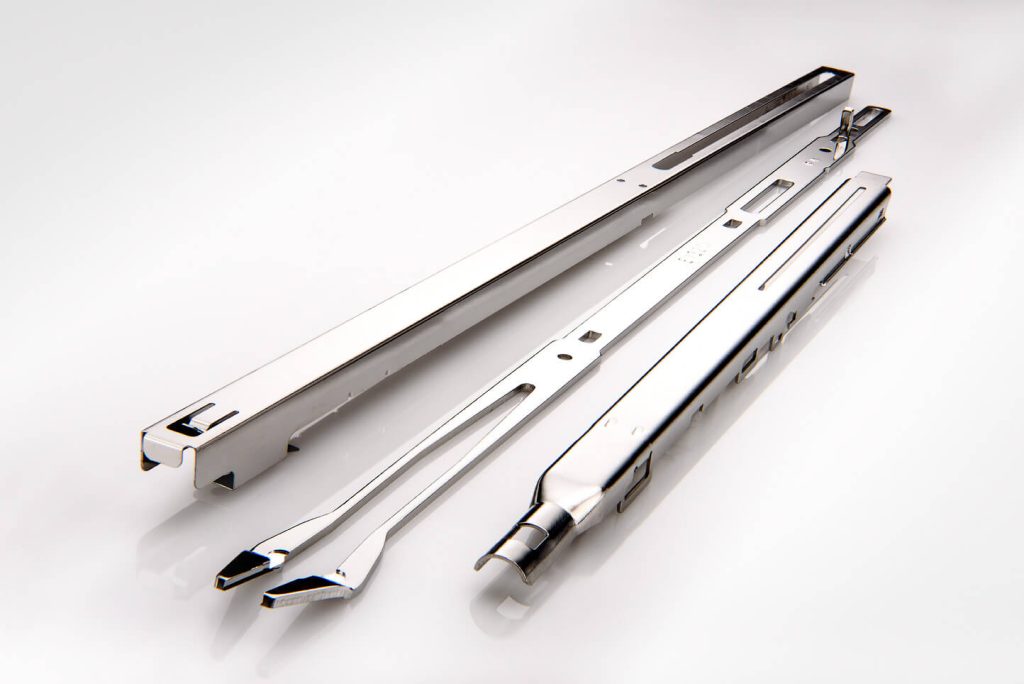Passivation in High-Humidity Environments: Protecting Stainless Steel Against Corrosion
High-humidity environments present unique challenges for stainless steel components. While stainless steel is widely valued for its natural corrosion resistance, prolonged exposure to moisture and damp conditions can compromise its surface integrity over time. This is where the passivation of stainless steel plays a crucial role, enhancing its ability to resist corrosion and maintain performance. In addition to traditional passivation methods, electropolishing offers an advanced option to achieve both passivation and a superior finish.

The Challenges of High-Humidity Environments
Humidity introduces constant exposure to moisture, which can lead to several issues for stainless steel, including:
- Pitting Corrosion: Tiny localized spots of corrosion can form when stainless steel is exposed to chlorides in humid air.
- Crevice Corrosion: Areas where water and contaminants accumulate, like joints or under gaskets, are especially vulnerable.
- Surface Contamination: Impurities on the surface of stainless steel can react with moisture, leading to rust and discoloration.
These risks are particularly significant in industries such as food processing, marine, and pharmaceuticals, where both hygiene and durability are paramount.
How Passivation Enhances Corrosion Resistance
What is passivation? The passivation of stainless steel involves removing free iron and contaminants from its surface to create a passive chromium oxide layer. This layer acts as a protective shield, preventing the stainless steel from reacting with moisture or other corrosive agents.
For high-humidity environments, passivation offers key benefits:
- Superior Corrosion Resistance: The chromium oxide layer minimizes the likelihood of rust or pitting.
- Improved Longevity: Passivated components can withstand prolonged exposure to damp conditions without degradation.
- Enhanced Cleanability: A smooth, passive surface is easier to clean and resists bacterial growth, critical in food processing environments.
Electropolishing: A Dual-Purpose Solution
While traditional citric or nitric acid passivation methods are effective, electropolishing provides an alternative process that not only achieves passivation but also enhances the surface properties of stainless steel.
Benefits of Electropolishing for High-Humidity Environments:
- Enhanced Corrosion Resistance: Electropolishing removes microscopic imperfections, reducing areas where moisture or contaminants can collect, further improving corrosion resistance.
- Mirror-Like Finish: The ultra-smooth surface minimizes bacterial adhesion and makes cleaning easier, a key advantage in food and beverage industries.
- Improved Aesthetic Appeal: In addition to performance benefits, electropolished components feature a reflective, high-quality finish ideal for visible or high-use areas.
Electropolishing is especially effective for applications where stainless steel must endure extreme exposure to chlorides or saltwater, making it an excellent choice for marine environments. Wondering how much material does electropolishing remove?
Applications in High-Humidity Industries
Passivation and electropolishing are essential for stainless steel components used in the following environments:
- Food Processing: In facilities where cleaning processes involve constant exposure to water and chemicals, passivation and electropolishing ensure that equipment remains rust-free, sanitary, and compliant with industry standards.
- Marine Industries: Components like boat fittings, valves, and piping face constant exposure to salt-laden air and water. Electropolishing adds an extra layer of defense against pitting and crevice corrosion while improving the surface finish.
- Pharmaceuticals: Sterile environments rely on passivated and electropolished stainless steel to prevent contamination and maintain compliance with strict regulatory standards.
Why Citric Acid Passivation and Electropolishing Are Leading Choices
While nitric acid passivation remains a traditional method, citric acid passivation and electropolishing provide unique advantages:
- Citric Acid Passivation: Offers an eco-friendly, non-toxic alternative for creating a robust passive layer.
- Electropolishing: Delivers dual benefits of passivation and enhanced surface quality, making it a top choice for demanding environments.
Conclusion
High-humidity environments demand stainless steel components that can endure constant exposure to moisture while maintaining integrity. By employing the passivation of stainless steel or electropolishing, industries can ensure that their equipment remains corrosion-resistant, durable, and compliant with stringent standards.
Whether you choose traditional passivation or electropolishing, both methods offer unparalleled benefits for protecting stainless steel in food processing, marine, and pharmaceutical applications.
Contact New England Electropolishing today to learn how our passivation and electropolishing services can enhance your equipment for high-humidity environments.
Electropolishing Resources

What is Electropolishing?
Electropolishing is an electrochemical and reverse plating process that removes the outer layer of skin on a metal...

The Electropolishing Process
The electropolishing process is initiated by immersing a metal part into a temperature-controlled bath of electrolyte...

Benefits of Electropolishing
Curious about the benefits of putting your parts through the electropolishing process? Read along below where we...

How Much Material Does Electropolishing Remove?
Electropolishing, when done properly is a highly controllable process which removes as little as...

How Much Will Electropolishing Improve the Surface Finish of My Part?
Ra and RMS are both representations of surface roughness. Ra is calculated as the roughness average of a surface’s...

Electropolishing Frequently Asked Questions
Learn the difference between electropolishing and electroplating as well as how the electropolishing process works...

What is ASTM B912?
ASTM B912 is an industry standard for the passivation of stainless steel alloys through electropolishing...

What is ASTM A967?
ASTM A967 is an industry standard specification for the chemical passivation treatments for stainless...

What is ISO 13485?
ISO 13485 is a standard that applies specifically to medical devices. ISO 13485 is designed to be...
